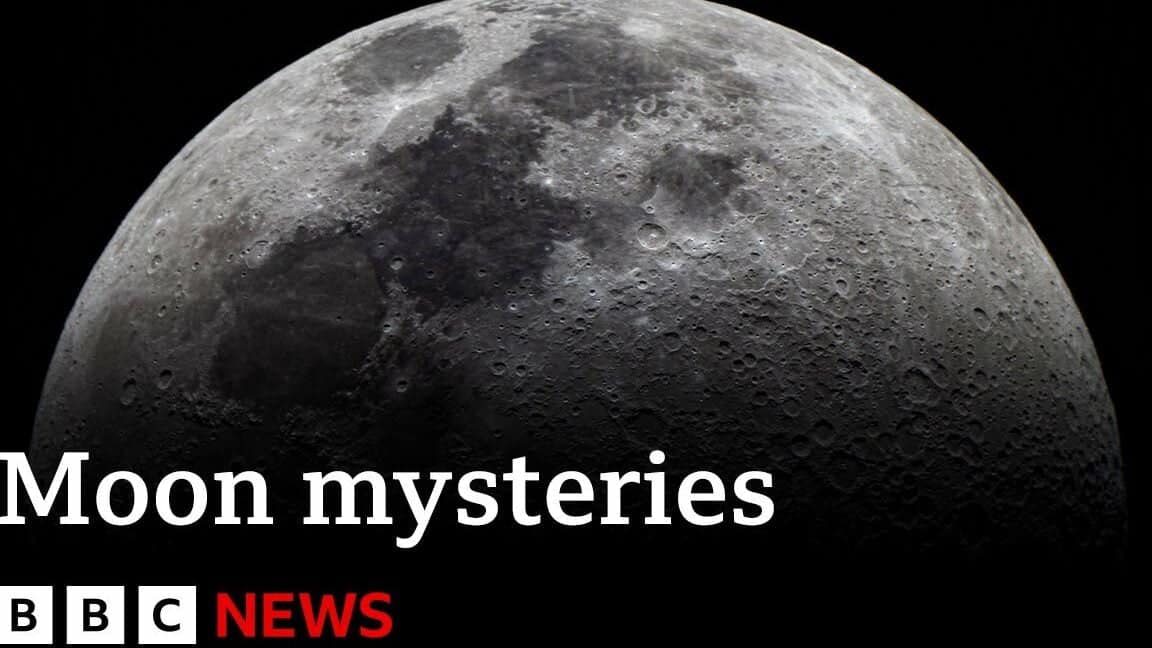The Moon, Earth’s solitary natural satellite, remains shrouded in enigma. Among the intriguing hypotheses is the notion that the Moon is a man-made satellite orbiting our planet.
While our team, guided by scientific principles, firmly rejects the notion of an artificial origin for our lunar companion, this article will explore the fascinating arguments presented by proponents of such a theory.
The hypothesis of the Moon’s artificial origin
In the 1960s, Soviet scientists proposed a hypothesis suggesting that the Moon may have an artificial origin. This theory, although proposed several decades ago, continues to be a topic of interest and discussion among researchers.
The conditions of the Moon’s appearance cannot be calculated by computer: its size and orbit are incompatible, suggesting that the satellite was either created by non-natural means or is an intriguing cosmic “caprice.”
The Moon’s substantial size, which is almost equal to one-fourth of our planet, is the most compelling argument. This is atypical in space, as satellites of other objects are always much smaller than their host planet.
The distance between the Earth’s surface and the Moon is also peculiar: visually, the Moon appears to be the same size as the Sun’s diameter, resulting in solar eclipses. However, the peculiarities don’t stop there. For instance, when examining the chemical makeup of dust particles taken from a fragment of the Moon’s surface, it was discovered that the composition differed from the rock it came from, which goes against conventional wisdom: if the dust was a result of rock fragments breaking apart, they should have the same composition.
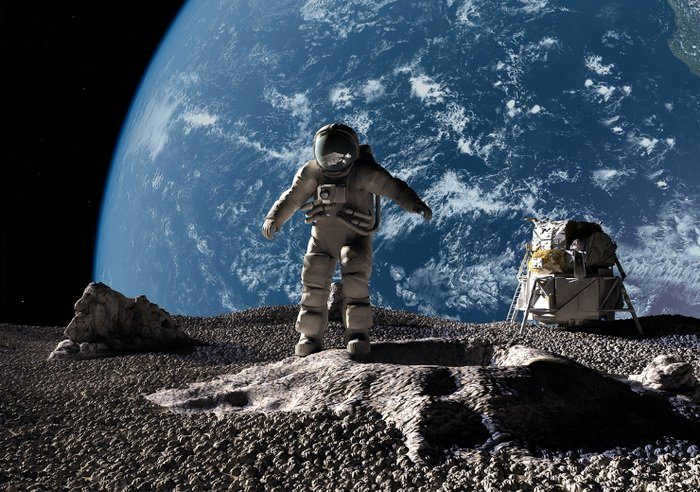
The age of our celestial body is a mystery. It is conceivable that it predates not only us, but also the Sun. Research indicates that certain lunar rocks were formed over 5 billion years ago, yet the dust settled on them is even older. Another enigma lies in the fact that some specimens of lunar soil exhibit magnetism, despite the absence of a magnetic field on the Moon. Furthermore, the occurrence in March 1971 remains puzzling – a massive vapor cloud that hovered above the satellite’s surface for nearly 14 hours, covering an area of approximately 100 square kilometers.
Origin Theories
There are four theories regarding the birth of the Moon:
- One theory suggests that the Moon is a fragment of our own planet, Earth. However, this hypothesis raises questions due to the notable differences between these celestial bodies.
- Another theory proposes that the Moon was formed simultaneously with Earth, originating from the same cosmic proto-cloud. Yet, if this were the case, they should have exhibited more similarities.
- A third theory suggests that the Moon entered the gravitational field of Earth from outer space. However, the perfectly round shape of the Moon’s orbit and its relatively close distance to Earth contradict this idea. Scientists have provided evidence that a celestial body of similar mass, under the influence of Earth’s gravity, would follow an elliptical trajectory rather than a circular one.
- The satellite was created by a highly intelligent entity, which is highly questionable as we have yet to encounter any beings of such intelligence other than humans, and mankind does not possess the capability to construct such objects.
Nevertheless, there are numerous concepts that proponents of the Moon’s artificial origin consider as evidence for their hypothesis.
The shape of the lunar surface
The mysterious shape of the Moon’s surface still remains unexplained.
Extensive studies have led to the conclusion that the Moon could potentially have a unique structure with a hollow core. It is believed that due to the extreme conditions, a natural object would not be able to maintain its shape for such a long period of time without collapsing. As a result, it has been hypothesized that the outer layer of the Moon consists of a robust metal framework that is at least 30 km thick. This theory is indirectly supported by the high concentration of titanium found in the lunar soil.
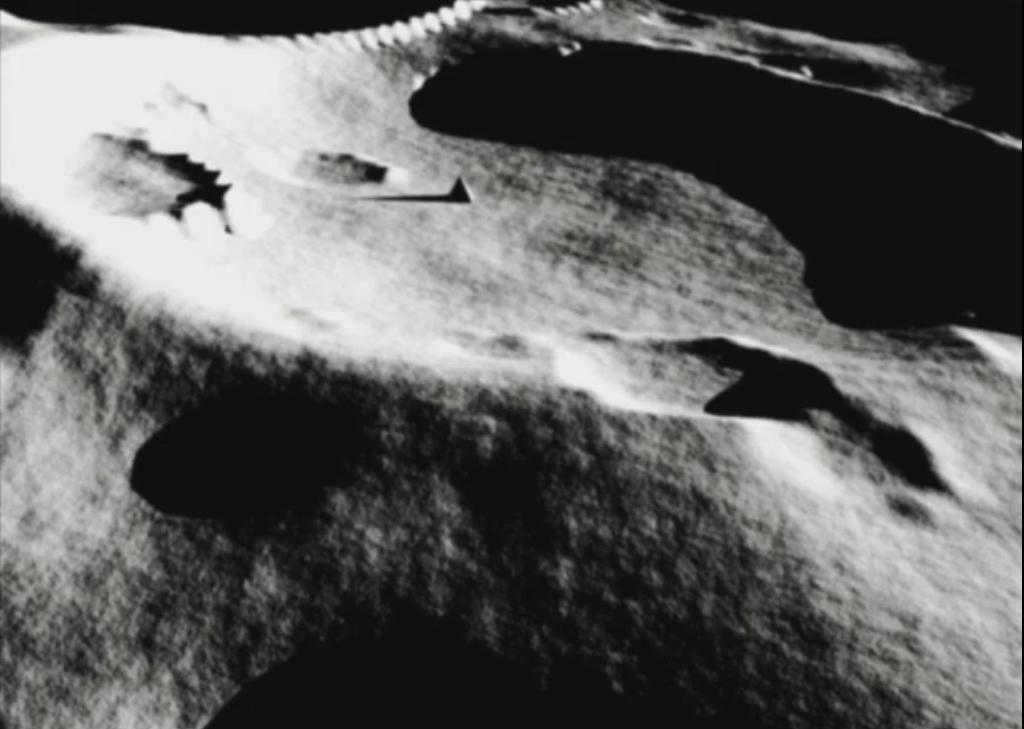
A significant amount of scientists find themselves perplexed by the abundance of craters found on the Moon.
The reasoning behind their presence is quite comprehensible: they are the consequence of collisions with other celestial objects. The Earth has encountered comparable incidents on multiple occasions, however, in our case, airborne meteorites and asteroids come into contact with a multi-kilometer layer of atmosphere, with only relatively small fragments of the celestial body making it through to the surface.
The absence of an atmosphere on the Moon should result in catastrophic collisions with other celestial bodies, according to the laws of physics. However, all lunar craters have relatively shallow depths. Even the largest ones, measuring 150 km in diameter, do not exceed a depth of 4 km. Computer simulations suggest that these craters should have depths of at least 50 km. It is almost as if the Moon’s solid structure prevents these “destroyers” from penetrating deeply into the satellite.
Geographical asymmetry
The lunar seas, which are areas flooded with solid lava, raise many questions.
One possible explanation for their appearance is that our satellite could have been a hot astronomical object with a liquid interior. However, there is currently no evidence of volcanic activity on the Moon.
Even more intriguing is the uneven distribution of the lunar seas: 4/5 of them are located on the visible side of the satellite. On the dark side, however, there are more prominent features such as mountain ranges and craters.
The Moon is an Extraterrestrial Spaceship
This hypothesis is undoubtedly one of the most extraordinary. According to this belief, the Moon is an enormous artificial structure, akin to a small planetary body, functioning as a fully-functional spaceship with its own self-contained ecosystem. It is said to have been created by an advanced extraterrestrial civilization that surpasses us in development by millions or even billions of years. The purpose of this astro-engineering marvel is to study the migration patterns of intelligent life in the vast expanse of the Universe and to regulate interaction between different galactic races.
Due to the Moon’s unique position in relation to Earth, our planet is perpetually visible in the same section of the sky, making the satellite an ideal vantage point for observing humanity. However, it is important to note that no concrete evidence has been discovered to substantiate this captivating theory.
Existence of mascons
Mascons, which are areas on the lunar surface with higher density or greater quantities of substance compared to the surrounding regions, are mainly found beneath the lunar seas. These mascons result in significant changes in gravitational attraction above them, although the causes of their formation remain unknown. The presence of mascons was first observed by the crew of the Apollo 8 spacecraft, who successfully completed the first manned orbit around the Moon.
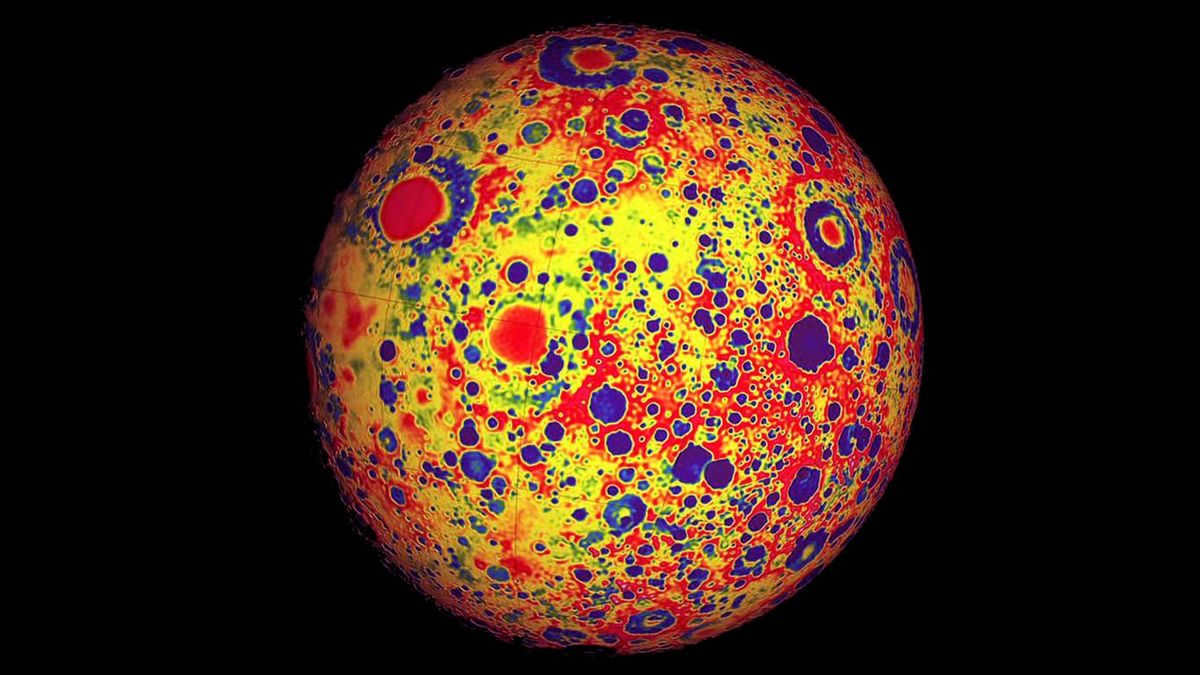
Reduced density
The density of the solid material on the moon is only 60% of that found on Earth, leading to speculation that the moon may actually be hollow.
An interesting phenomenon is described in scientific literature. In 1969, the Apollo 12 mission landed on the moon and ejected a descent module onto its surface. The impact of this action caused a lunar tremor, resulting in the moon emitting a sound reminiscent of a ringing bell. This peculiar signal persisted for about an hour. Based on these observations, researchers have proposed the possibility that the moon either lacks a core altogether or possesses an exceptionally lightweight one.
All lunar images available on official websites are initially edited
It is an astonishing fact that from the orbit of Earth, one can capture a photograph that clearly reveals the details of a house or a car, yet the majority of lunar photos are of subpar quality.
The first inklings of image manipulation arose after the Chinese lunar rover, “Jade Hare,” released pictures of the Moon’s surface, which appeared not gray but brown. When observed from a distance, any celestial object lacking water, vegetation, and atmosphere will appear silver, as this effect is caused by reflected sunlight. However, upon closer examination, it will display some degree of coloration.
Images captured by American astronauts reveal a monochromatic nature of the Moon’s surface – appearing white or grayish in sunlit areas and dark in shadows. The lack of consistent coloring throughout the terrain leads us to the conclusion that all official lunar photographs undergo graphic editing. The most plausible explanation for this phenomenon is that experts remove the natural coloration of the surface and conceal its structure in order to conceal certain details that may be undesirable for public viewing.
However, the truth behind this matter lies not in a conspiracy of scientists manipulating the images, but rather in the utilization of various photo filters during the image processing stage for scientific purposes.
Once again, we would like to reiterate that the claims regarding the Moon’s artificial origin are merely the product of conspiracy enthusiasts and unsubstantiated theories, completely unrelated to the scientific consensus.
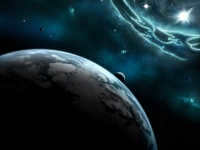
The Moon is Earth’s closest celestial object, serving as a natural satellite. It orbits the Earth at a distance of approximately 400,000 kilometers. The Moon has a diameter that is only four times smaller than that of Earth, measuring 3,476 kilometers. Unlike Earth, which is flattened at the poles, the Moon has a shape that closely resembles a perfect sphere.
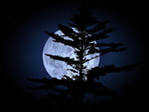
Goal
To become familiar with the natural characteristics of the Moon, Earth’s satellite.
Objectives
1. To summarize and organize the information learned about “Space”.
2. To reinforce students’ knowledge about the history of the development of modern ideas about the solar system, the planets of the solar system, their characteristics, celestial bodies, and stars.
3. To expand understanding of constellations and the history behind their names.
4. To enhance students’ ability to analyze, compare, and establish relationships between a planet’s location and its structural features.
5. The aim is to generate curiosity in the field of astronomy and natural science, to broaden students’ knowledge, to foster an interest in understanding the structure of the solar system, and to enhance students’ creative skills.
Proposal
Our hypothesis is that by gaining knowledge about the natural characteristics of the moon, we can successfully simulate a lunar eclipse.
Findings from the literature review
Theories on the origin of the moon
The exact origin of the moon is still uncertain and there are three main hypotheses that have been developed. In the late 19th century, J. Darwin proposed a hypothesis which suggests that the moon and the Earth were once a single molten mass. As this mass cooled and compressed, its rate of rotation increased, causing it to break into two separate parts – the larger Earth and the smaller Moon. This hypothesis explains the moon’s low density, which is a result of it being formed from the outer layers of the original mass. However, this theory faces significant objections in terms of the process that would cause such a separation, as well as the notable geochemical differences between the rocks found on Earth and the moon.
The capture hypothesis, formulated by German scientist K. Weizsäcker, Swedish scientist H. Alfven, and American scientist G. Yuri, proposes that the Moon was initially a tiny planet that became a satellite of the Earth when it passed close to it due to the Earth’s gravitational force. The likelihood of such an occurrence is exceedingly low, and furthermore, under this scenario, we would anticipate a more significant distinction between terrestrial and lunar rocks.
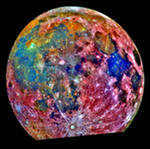

Physical Characteristics
Similar to other celestial bodies, such as planets and their moons, the Moon primarily emits light by reflecting sunlight. Typically, the illuminated portion of the Moon that is directly exposed to the Sun is visible to us. However, there are exceptions, particularly during the time near the new moon phase, when the Earth’s reflected light faintly illuminates the dark side of the Moon, resulting in a captivating image of the “old Moon in the arms of the young.” In terms of brightness, the full Moon is about 650 thousand times dimmer than the Sun. It reflects only 7% of the sunlight that reaches its surface. Additionally, after periods of heightened solar activity, certain areas of the Moon’s surface may emit a faint glow due to luminescence.
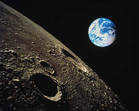
The Moon’s visible side, which is always facing the Earth, is adorned with prominent dark regions known as seas, according to astronomers from the past. These seas were selected as landing sites for the initial astronaut missions due to their relatively flat surface. Research indicates that the seas consist of a dry surface covered with small, porous lava fragments and occasional rocks. These vast, dark areas on the Moon are a striking contrast to the bright, mountainous regions, whose rugged surface reflects light more effectively.
Contrary to expectations, spacecraft that have orbited the Moon have revealed that the far side of the Moon lacks large seas and therefore does not resemble the visible side.
Density and Composition of the Moon
The average density of the Moon is approximately 3.34 g/cm3, which is similar to the density of chondrite meteorites, excluding volatile components like hydrogen and carbon. The Moon’s density is also comparable to that of the Earth’s mantle, supporting the hypothesis that the Moon originated from a separation from the Earth. The Earth’s higher average density of 5.5 g/cm3 is primarily due to its dense iron core, which the Moon lacks.
Additionally, the Moon’s moment of inertia suggests that it is a uniformly dense sphere covered by a 60 km thick crust of anorthosite, a calcium-rich feldspar. This finding is further supported by seismic data.
The primary types of lunar rocks include:
- Basalts found in lunar seas, varying in iron and titanium content.
- Continental basalts are abundant in rock, rare earth elements, and phosphorus;
- Aluminum mainland basalts may have formed as a result of impact melting;
- Igneous rocks like anorthosite, pyroxenite, and dunite are present.
The regolith (mentioned earlier) is composed of fragments of basic rock, glass, and breccia (rock made up of cemented angular fragments) that are derived from basic rock types. Lunar rocks are not identical to terrestrial rocks. Typically, lunar basalts have higher concentrations of iron and titanium, while anorthosites are more abundant on the Moon. Additionally, volatile elements such as potassium and carbon are less common in lunar rocks. Lunar nickel and cobalt likely were replaced by molten iron prior to the Moon’s formation.
Movement of the Moon
The Moon’s movement is comprised of two distinct motions – its orbit around the Earth and its orbit around the Sun, which it shares with the Earth. The Moon’s motion, similar to the Sun’s, takes place from west to east, in the opposite direction of the Earth’s rotation.
During the course of a lunar month, the Moon moves through the zodiacal constellations with a monthly cycle of 29.5 days. However, during this time, the Sun also shifts along the ecliptic by 30 degrees, transitioning into a new constellation. As a result, the Moon completes its journey through one zodiacal constellation and begins anew in another over the course of a month.
Throughout this period, the Moon goes through all of its phases: starting with the new moon (when the Moon and the Sun are in conjunction), then moving to the first quarter (when the Earth-Moon and Earth-Sun directions form a right angle), followed by the full moon (when the Moon is on the opposite side of the Sun), then transitioning to the last quarter (which is similar to the first quarter), and finally returning to the new moon, when it is once again in conjunction with the Sun.
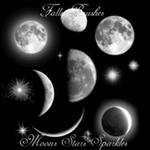
The Surface of the Moon
The most ancient complete map of the visible hemisphere of Earth’s only natural satellite can be found in Selenography, a book written by J. Hevelius in 1647. In 1651, G. Riccioli proposed the idea of giving names of notable astronomers and philosophers to various features found on the lunar surface.
As new discoveries are made, fresh names are given to these different features. For instance, in 1964, the Ranger 7 lander touched down on an unnamed location, which is now known as the Poznannyi Sea. The prominent craters captured in photographs taken by the Luna-3 spacecraft on the far side of the Moon have been named after Tsiolkovsky, Lomonosov, and Joliot-Curie. However, any new name must receive official approval from the International Astronomical Union before being officially recognized.
There are three primary categories of formations that exist on the Moon:
- Seas – expansive, dimly lit regions that possess a relatively even surface and are covered with basaltic lava;
- Continents – elevated areas that are brightly lit and contain numerous round craters of varying sizes, often overlapping;
- Mountain ranges, such as the Apennines, and smaller mountain systems like the one that surrounds Copernicus Crater.
The Phases of Lunar Exploration
It comes as no surprise that the initial spacecraft journey beyond Earth’s orbit was aimed at the Moon. This distinction belongs to the Soviet spacecraft Luna-l, which was launched on January 2, 1958. Following the flight plan, a few days later it flew within a distance of 6,000 kilometers from the Moon’s surface. Later that same year, in mid-September, a similar Luna-2 vehicle successfully landed on the surface of our planet’s natural satellite.
A year later, in October 1959, the automatic vehicle Luna-3, equipped with photography equipment, conducted a survey of the Moon’s far side (approximately 70% of its surface) and transmitted its images back to Earth.
Regarding the Moon and the transportation of its samples back to Earth.
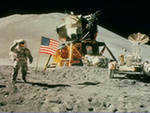
Luna-17 and Luna-21 successfully accomplished another mission in 1970 and 1973, respectively. These missions involved the deployment of lunokhods, which were autonomous vehicles controlled by a stereoscopic television feed from Earth, enabling them to traverse the Moon’s surface.
Exploration of the Moon
The United States initiated an ambitious project in the late 1960s to explore the Moon. The objective was to send a human to the Moon and safely bring them back to Earth within a decade. The program, known as Apollo, underwent its first unmanned test in February 1966.
However, a tragic event on January 27, 1967, hindered the program’s progress. During a training exercise on Earth, astronauts E. White, R. Guffey, and V. Grissom lost their lives in a sudden and devastating fire.
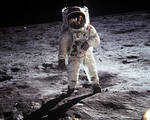
In December 1968, Apollo 8 was launched into orbit around the Moon without a lunar cabin. It then re-entered the Earth’s atmosphere at second space speed. This mission was significant as it provided valuable images that helped determine the future landing sites for humans on the Moon. On July 16, Apollo 11 was launched towards the Moon and on July 19, it entered lunar orbit. Finally, on July 21, 1969, American astronauts N. Armstrong and E. Aldrin became the first people to land on the Moon as part of the Apollo 11 mission.
In my experiment, I chose to illustrate the lunar eclipse. To accomplish this, I conducted the following procedure: I utilized a soccer ball and illuminated it with a table lamp, creating a shaded area on the opposite side of the ball. Additionally, I suspended a smaller ball from a string. When the smaller ball aligned directly behind the larger ball, in a straight line from the lamp, an “eclipse” occurred, meaning that the smaller ball was completely obscured by the larger ball.
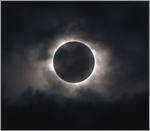
Main Findings
- The Moon is the Earth’s sole natural satellite and it is the closest celestial object to us, with an average distance of 384,000 kilometers.
- It is only natural that spacecraft were initially directed towards the Moon, as it is the nearest celestial body to the Earth.
- The measurements conducted by the instruments on the Luna 1 station led scientists to make two significant discoveries. Firstly, it was determined that there is no substantial magnetic field in the vicinity of the Moon. Secondly, ionized plasma streams, known as solar wind, were detected in the interplanetary space.
Summary
The MOON is Earth’s closest celestial neighbor, a permanent satellite that orbits the planet. It is a lifeless, rocky sphere without an atmosphere. With a diameter of 3,480 km, the Moon is approximately a quarter of the size of Earth. When viewed from Earth, its angular diameter is about 30 arc minutes. The average distance between the Moon and Earth is approximately 384,400 km, equivalent to about 30 times the diameter of Earth. It takes less than 3 days for a spacecraft to reach the Moon. The first successful lunar landing was achieved by Luna-2, a spacecraft launched by the Soviet Union on September 12, 1959. On July 20, 1969, American astronauts from the Apollo 11 mission became the first humans to set foot on the Moon.
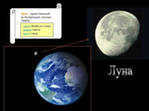
List of Resources
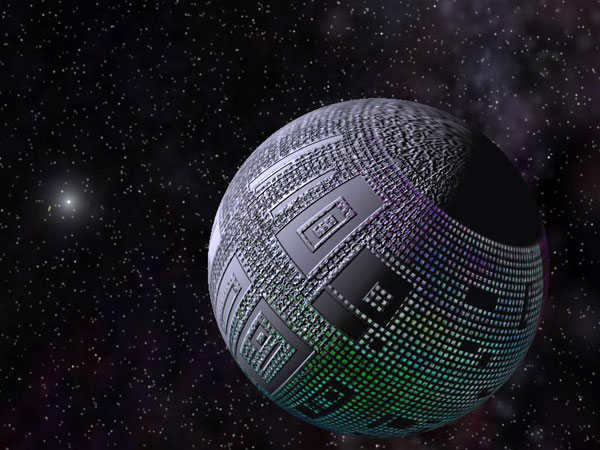
Each clear evening, the Moon graces the sky, serving as Earth’s natural satellite. It captivates our gaze, concealing countless enigmas. The Moon’s inner composition remains a mystery; its hollow interior remains unexplored, as well as the unidentified objects that traverse its surface.
Most significantly, its origin remains elusive. Numerous hypotheses have been proposed, yet none have been substantiated. Given these circumstances, it is logical for the United States and the USSR to scale back their lunar programs. It is conceivable that humans are simply forbidden from setting foot on the Moon.
The Moon and the Earth are approximately the same age, having formed around 4.5 billion years ago. These two celestial bodies bear striking resemblances to one another. For instance, both the Earth and the Moon possess an identical ratio of oxygen isotopes. Moreover, their chemical compositions closely mirror each other. In terms of size, the Moon’s equator measures approximately 10.9 thousand kilometers, which is roughly a quarter of the Earth’s equator. The Moon completes a full orbit around the Earth in the span of one month, while also rotating on its axis at a synchronized pace. As of now, the Moon stands as the sole entity in the vast cosmos that has been explored and visited by humanity.
Official Explanations for the Origins of the Moon
There are now numerous official theories regarding the moon’s origin. However, none of these explanations fully account for all of the moon’s peculiarities.
Divisions of the Earth in Ancient Times
One hypothesis that gained significant popularity suggested that the moon formed due to an increase in centrifugal force. In other words, it was proposed that the Earth used to rotate at a much faster rate than it does now. This rapid rotation would have caused the Earth to elongate along the equator. Eventually, this elongation would have led to a portion of the Earth breaking away and forming an independent celestial body – the moon. However, an alternative theory suggests that the moon may have originally been an independent celestial body that was captured by the Earth’s gravitational field as it passed by. This theory holds a stronger claim to validity.
A colossal collision
It is a well-known fact that the Earth has experienced numerous encounters with massive celestial objects. Could one of these collisions have led to the formation of a new celestial body – the Moon? Currently, astronomers are trying to confirm the existence of a protoplanet called Theia, which is believed to have had enough mass to break off a significant portion from the Earth.
Another theory suggests that the Moon may have originated from Earth’s vapor. Due to intense meteor bombardment, the Earth heated up to a point where its surface vaporized. The gases then escaped, while the remaining particles condensed to form the Moon. However, an alternative explanation has emerged that accounts for various anomalies that are inconsistent with the official theories.
In 1969, the initial astronauts who set foot on the lunar surface left a seismograph behind, which transmitted information about the surface’s fluctuations back to Earth. Upon analyzing the data, scientists reached a conclusion that beneath the rocky exterior lies a “shell” approximately 30 kilometers thick. This “shell” is primarily composed of nickel, tungsten, beryllium, and vanadium.
Such a combination of elements would not occur naturally if the Moon were a typical satellite. While many may doubt the existence of this layer, proving its reality is not overly challenging. The craters on the Moon possess flat bottoms and nearly identical depths, which can only be explained by two possibilities. Either all the craters formed due to the same celestial body, or something is preventing asteroids from penetrating deeper into the Moon’s surface.
There are 74 cubic kilometers of empty space beneath this metallic layer. The contents of this space are currently unknown. In the 1960s, astronomers from the USSR and USA speculated that this void may have conditions suitable for life. In 1977, a book was published by a British author using the pseudonym J. Leonard. This book contained classified photographs of the far side of the Moon, revealing evidence of its artificial origin. These photographs clearly depict structures within the craters that are not of terrestrial origin.
Additionally, there have been numerous anomalies observed by astronomers, such as luminous objects moving at high speeds across the Moon’s surface. This suggests that the Moon is a product of extraterrestrial engineering. This could explain the unusually curved surface of our satellite and the high concentration of titanium in its crust.
Simultaneously, it has been observed that the Moon’s gravity is not uniform, and science has yet to provide a rational explanation for this anomaly. Rather than drawing a conclusion, it is worth mentioning that within the scientific community, the theory of the Moon being an artificial construct is regarded as equally plausible as other theories.
"Nothing lasts forever under the Moon" – is what a well-known saying tells us. However, the Moon itself is indeed eternal, at least from the perspective of mankind, who has always gazed at the night sky adorned with this captivating Earth satellite. To this day, it remains unrivaled in the nocturnal realm. It is no secret that this pale yellow disc appears utterly distinct at sunset, midnight, and approaching morning, which has sparked countless debates regarding the underlying reasons. People never cease to argue about where the moon shines the brightest. To ascertain where the Moon appears largest, one must delve into the realms of not only astronomy but also physics.
Approaches and distances, variations in size, impacts on living organisms, tides, and tidal surges – distinguishing truth from fiction requires a thorough examination of all the arguments at hand.
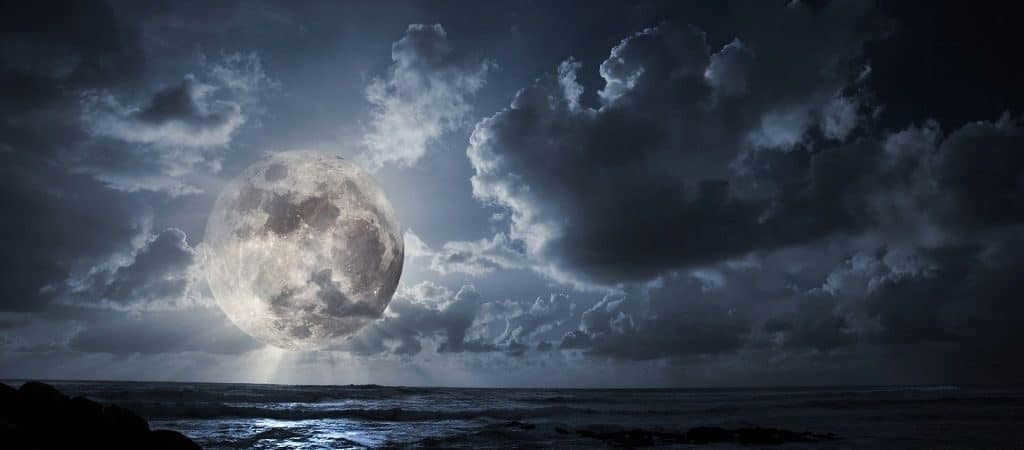
"When the trees were tall…"
For many years, individuals have been attempting to determine the answer to the question of which nation the moon appears largest. Some have even narrowed down the search to a specific city or region. It was long believed that the size of the moon varied depending on the geographic latitude of the country. It is often claimed that individuals vacationing in Turkey, the Caucasus, or Africa have witnessed a moon of immense size that cannot be observed from home.
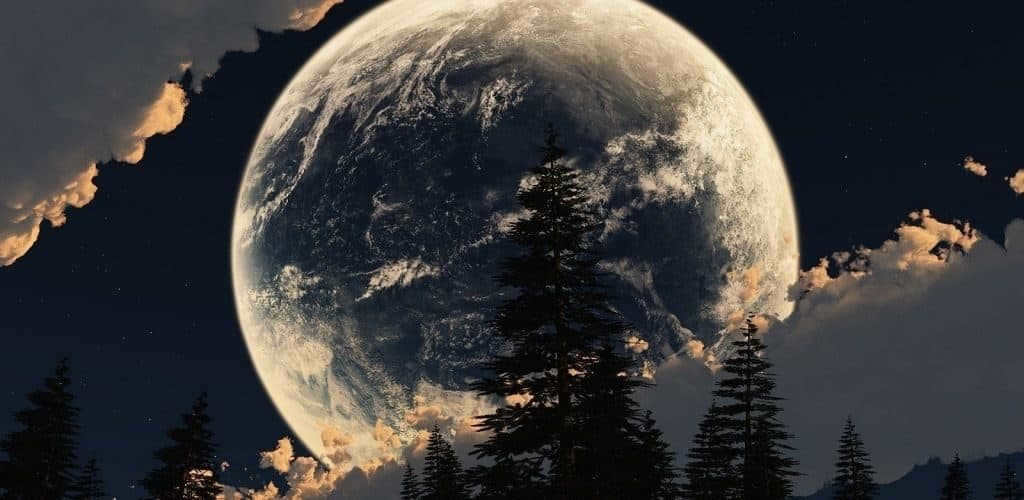
Ordinary explanations
Don’t fall behind psychologists and physicists. They claim that the moon can actually appear to be a large celestial body to a person at rest for reasons that can be easily explained from a scientific perspective. When people are on vacation, they try to find the best vantage points to admire the night sky: by the coast, they gaze out towards the sea, and in the mountains, they look upwards.
This means that all other sources of light are hidden from view, creating the illusion of a convex sky. Stars shining with varying intensities are more visible, and the moon appears as bright as it possibly can in any urban area. In big cities, its light is overshadowed by streetlights, skyscrapers, billboards, and other illuminated signs. It simply fades away amidst the surrounding brightness, and thus doesn’t attract as much attention.
Proximity to the horizon
The proximity of the Earth’s single satellite to the horizon has always been a topic of great interest. This celestial body, which emits light and provides illumination during the night, is of significant size. Its ever-changing shape and size have captivated humans since ancient times. When people were unable to explain why the lunar circle sometimes appeared small and other times very large, they attempted to comprehend it through a unique perspective of the universe, where all inanimate objects possessed qualities of living beings. The Earth’s natural satellite was no different.
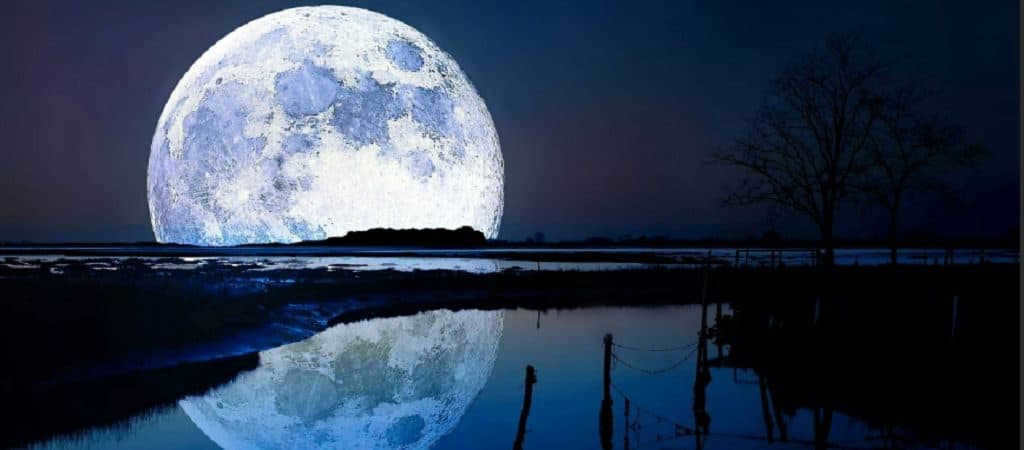
Throughout history, there has been a shift in perspective on how we perceive the moon’s size when it is near the horizon. The field of astronomy emerged to explore the intricacies of these changes in the planet’s natural satellite. Back in the 4th century BC, Aristotle proposed an explanation for why the moon appears larger near the horizon. He attributed this phenomenon to the magnification effect caused by Earth’s atmospheric layers. This forward-thinking scientist recognized that while the apparent size may change, the actual parameters of the moon remain constant. However, it is now known that this explanation only tells half the story. Modern astronomers understand that the atmosphere does affect the moon’s brightness near the horizon, but it has no impact on its size.
In addition, recent studies indicate that the Moon appears to be 1.5% larger when it is positioned well above the horizon. This phenomenon occurs because when the Moon is near the horizon, the distance between the observer and the Moon is greater by the radius of the Earth compared to when the lunar disk rises high in the sky.
Playing with the Mind
Scientists specializing in vision have discovered that when the retina captures the image of the moon, regardless of the angle at which it is viewed, the resulting image is always 0.0015 cm in size. This means that the physical position of the moon does not affect the size of the image on the retina. However, the brain processes this information in a unique way, leading to an optical illusion. What exactly causes this deception?
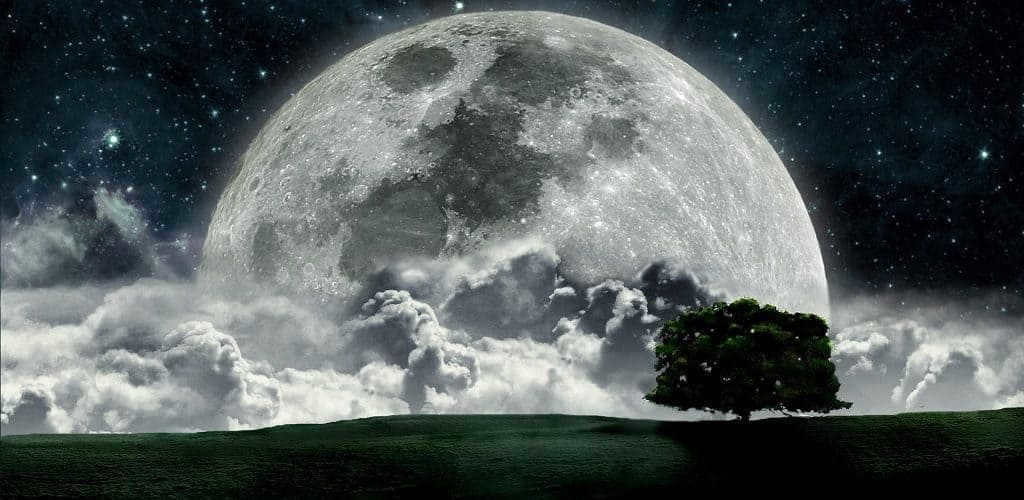
Several research studies have discovered that the perception of the moon’s size depends on various factors. Interestingly, this perception can even change depending on whether the observer is standing, sitting, or lying down. However, the primary reason for this phenomenon is the presence of other objects near the horizon in the observer’s field of vision. These objects act as reference points, allowing the brain to compare the size of the moon with them. Buildings, trees, and other structures on the horizon, being closer to the observer, unconsciously trigger the brain to make size comparisons. When the moon is high in the sky, it appears smaller because the brain lacks a reference point to compare its size to.
Close or big?
There is a separate phenomenon associated with the question of where this celestial body appears largest: near the horizon or in the middle of the sky. Two distinct groups emerge among individuals. The initial group asserts that the lunar disk appears large when it is near the horizon. On the other hand, members of the second group contend that it does not appear large but rather appears closer.
Any individual can conduct a personal experiment to test this theory: in the evening, one can simply step outside and observe the Earth’s satellite, contemplating whether it appears close or large.
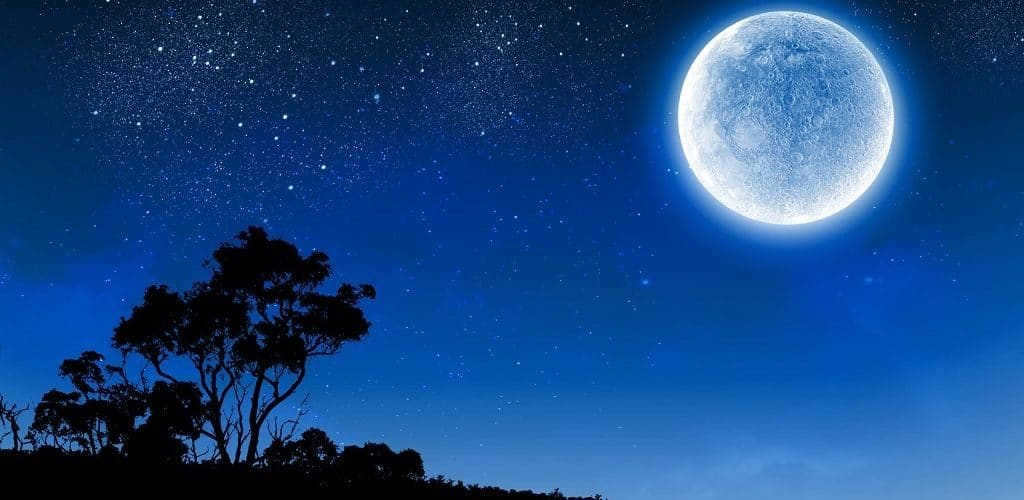
Reimagined as a Film Scene
Across various nations, people often develop a distorted perception of the Moon’s size due to the influence of the film industry. Almost every movie includes a massive white-yellow disk illuminating the night sky, serving as an essential backdrop for the protagonists as they bask in the enchanting moonlight. The American Dream Factory, in particular, is notorious for perpetuating this misconception, as evident after watching even a few romantic films.

How to verify
If you have any doubts about the size, scientists suggest conducting a few practical experiments. These experiments can be done by anyone as they do not require extensive knowledge of astronomy or specialized equipment.
One experiment involves taking regular photos when the disk is first emerging above the horizon and then again after a short period when it is fully risen. The key requirement is to take the photos from the same location without using zoom on the camera. Afterward, you can print out the photos and compare the size of the circles to determine if any are larger or smaller.
Furthermore, you can easily verify the deceptive effect using a regular coin. The procedure is as follows: grasp the coin in your extended hand and cover the celestial object with it. Close one eye tightly to fixate the image. After waiting for thirty minutes, repeat the same experiment with a disk that has already moved beyond the horizon. This will immediately demonstrate that the relative size remains constant, only the perception alters.
A rolled-up sheet of paper can be utilized for a similar experiment. By observing only the Moon through such a “telescope,” you will observe that, devoid of surrounding objects, it neither grows nor diminishes in size as it distances itself from the horizon line.
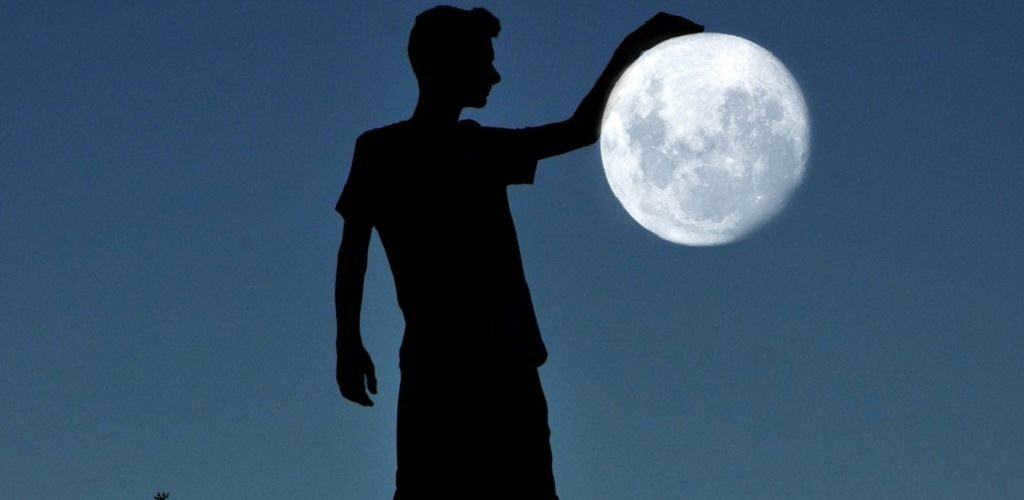

The Phenomenon of Super Moon
Occasionally, the Moon appears larger due to its close proximity to our planet. Scientists refer to this celestial event as perigee, when the Moon comes as close to the Earth as possible. During this time, astronomers are able to observe the lunar landscape with greater clarity than ever before. This phenomenon occurs approximately once a year. Each Super Moon is unique because the distance at which the natural satellite approaches the Earth varies slightly each time. This variation is influenced by the gravitational field created in our solar system by its center, the Sun. The strength of this field determines how close the satellite can approach and how large its disk appears. Consequently, the lunar orbit becomes irregular and distorted.
There is a widespread concern among individuals about the influence of the Super Moon on their well-being. However, it is important to note that these fears are unfounded. Extensive research conducted by medical professionals has conclusively shown that the Super Moon does not exacerbate pre-existing chronic conditions nor does it lead to the development of new ones. It is worth mentioning that rumors of disturbances during this period are primarily observed in individuals with nervous dispositions or mental illnesses. Nevertheless, there is no factual evidence to support the notion that the Super Moon is associated with an increase in criminal activities when compared to other time periods.
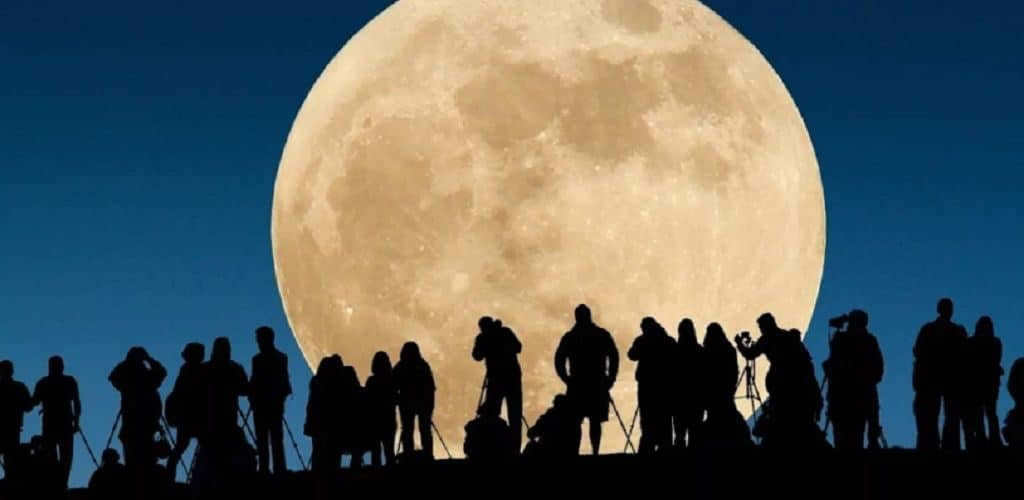
Mental health professionals firmly believe that individuals with fragile mental states can experience a disruption in their normal state due to various factors. If someone constantly reminds them about the impending arrival of the Super Moon and exacerbates their concern about it, the patient’s condition will deteriorate. However, it is not the actual size of the Moon that causes this deterioration, but rather their heightened susceptibility to other people’s anxiety.
Scientists believe that the size of the lunar disk appears larger during the winter months compared to the summer months. This phenomenon can also be observed by the most astute individuals. There is a scientific explanation for this occurrence. It is due to the comparison of the Earth’s orbit and the orbit of its natural satellite, the moon. During the winter months, these orbits are at their closest proximity to each other. The peak of this closeness occurs in December. The gravitational field of the Earth causes a slight bending in the lunar orbit, resulting in the most spectacular full moons just before New Year’s Eve. If a Super Moon aligns with this month, it provides a special aesthetic pleasure.
What Comes Next
Presently is the most opportune moment to appreciate the natural satellite of our planet. Experts in astronomy assert that the scene is gradually shifting: the complete moon will no longer be as awe-inspiring as future generations will be able to witness it. The lunar orbit’s gradual change is at fault for this. It is progressively moving farther away from Earth each year. The yearly distance is slightly less than 4 centimeters, but this pace will continue to rise annually.

